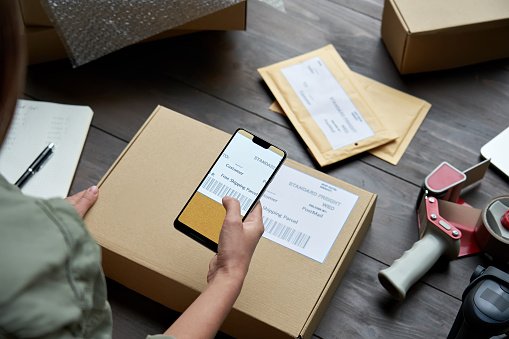Introduction.
Building a million-dollar dropshipping company might sound like an overwhelming goal, but it’s achievable with the right strategy.
When I first started exploring the world of dropshipping, it felt like a simple, low-cost way to get into e-commerce without managing physical inventory.
But as I learned more, I realized that while it’s easy to start, scaling it into a million-dollar business takes real work and smart planning.
To succeed, I had to think beyond just listing products on a website. I had to master marketing, source winning products, and understand customer behaviour.
Many successful dropshippers don’t just rely on one or two hot items; they focus on building a brand, optimizing their supply chain, and creating a seamless experience for their customers.
According to a report by Statista, global e-commerce sales are expected to grow to $6.38 trillion by 2024, which shows there’s plenty of opportunity in the market. The key is knowing how to tap into it effectively.
In this post, I’ll walk through the exact steps needed to build a dropshipping business that’s capable of reaching that seven-figure mark.
How Do I Build a Million-dollar Dropshipping Company?
Building a million-dollar dropshipping company might sound like a distant dream, but with the right strategy, it’s completely possible.
It’s not about luck or throwing up a store and hoping for the best.
Instead, you’ll need a combination of careful planning, smart marketing, and consistent execution.
I’m going to break it down into actionable steps, so you can see how to make it happen.
1. Choose the Right Niche.
The first step is finding a profitable niche. Not every product is going to turn into a best-seller, so you’ve got to narrow down your options.
A good niche is something that strikes a balance between high demand and low competition.
The last thing you want is to jump into an overly saturated market, like electronics or beauty, without a clear differentiator.
Look for niches that:
- Solve a problem or fulfill a need
- Have passionate or hobbyist audiences
- Are not too seasonal (so sales can be consistent year-round)
- Are scalable with higher ticket items
A good tool to help you assess niche trends is Google Trends, where you can see search patterns and popularity over time. Researching products with suppliers on platforms like AliExpress, Oberlo, or Spocket will also give you a sense of what’s trending and at what price points.
2. Build a Professional and User-friendly Store.
Once you’ve chosen your niche, you’ll need to set up a store that looks professional and trustworthy.
I recommend using Shopify since it’s user-friendly, has countless integrations, and offers solid customer support.
When designing your store:
- Keep it simple and clean. Customers should be able to navigate easily.
- Use high-quality images and descriptions for your products.
- Ensure that your checkout process is seamless and mobile-friendly. About 70% of online purchases are now made on mobile devices, so don’t overlook the nature of installing apps that help with conversions, like urgency timers, exit-intent popups, and customer reviews.
3. Find Reliable Suppliers.
Your success in dropshipping largely depends on your suppliers. If your customers experience long shipping times or receive poor-quality products, they won’t be returning to your store.
Look for suppliers that:
- Offer consistent quality
- Have reasonable shipping times (7–15 days is optimal)
- Provide tracking numbers
- Offer good communication
Platforms like AliExpress and Spocket are great starting points, but consider diversifying into suppliers from regions like the U.S. or Europe to cut down shipping times, especially as your business scales.
4. Focus on Effective Marketing.
This is the part that can take your dropshipping business from a few hundred dollars a month to a million-dollar company.
You’ll need to master advertising and social media marketing to drive traffic to your store.
Here are some key marketing strategies:
- Facebook Ads: Facebook’s ad platform is powerful for targeting specific demographics. You can create custom audiences based on interests, behaviours, and even lookalike audiences from your best-performing customers. It’s a learning curve, but many dropshipping stores make their first million by perfecting Facebook ads.
- Instagram and TikTok: These platforms are gold mines for building brand awareness, especially if your products appeal to a younger audience. Partnering with influencers can give you social proof and drive tons of traffic.
- Google Ads: Google Shopping ads target users who are actively searching for your products. It’s a great tool to catch potential buyers when they’re ready to purchase.
- Email Marketing: Don’t overlook the power of email marketing. Build an email list from the start, and use it to send promotions, updates, and abandoned cart reminders.
5. Leverage Data and Analytics.
Understanding your data is essential to scaling up to seven figures. Use tools like Google Analytics, Facebook Pixel, and Shopify Analytics to track key metrics such as conversion rates, average order value, customer acquisition costs, and lifetime value.
A typical dropshipping store might have a conversion rate of 2–3%, meaning that 2 to 3 out of every 100 visitors make a purchase.
If you can improve that even slightly, it can have a significant impact on your bottom line.
A/B testing different elements like headlines, product images, and ad copy can help you optimize what works best for your audience.
6. Offer Great Customer Service.
Since you don’t control shipping times or product quality directly, customer service is where you can truly differentiate your business.
Respond quickly to inquiries, provide clear tracking information, and handle returns or complaints with professionalism.
Good customer service can reduce refund requests, increase repeat customers, and boost your brand’s reputation. Some companies make the bulk of their income from loyal, repeat customers.
7. Automate and Outsource.
To scale your dropshipping business to a million dollars, you’ll need to automate and outsource many tasks to free up your time for bigger growth strategies.
Shopify has a ton of apps that automate inventory updates, order processing, and email marketing.
Consider outsourcing customer service or hiring a virtual assistant for routine tasks.
As the company grows, your focus should be on marketing, product sourcing, and growth strategies.
8. Scale Gradually.
Don’t rush into scaling too quickly. It’s tempting to pump more money into ads, but if you don’t have the systems in place, rapid scaling can lead to inventory issues, cash flow problems, or customer service nightmares.
Instead, scale gradually:
- Test products with small ad budgets, then scale up what works.
- Focus on upsells and cross-sells to increase average order value.
- Expand into other countries if you find success in one market.
9. Keep Innovating.
Once you’ve hit a steady flow of sales, don’t get complacent. The dropshipping market evolves quickly, and you need to stay ahead of trends.
Regularly research new products, adapt to market changes, and stay engaged with your customers through social media and email marketing.
Some of the largest dropshipping companies consistently pivot and add new products to keep customers engaged.
Conclusion.
So, how do you build a million-dollar dropshipping company? It’s a journey that requires a combination of strategy, hard work, and a bit of luck.
Remember, building a successful dropshipping business is a marathon, not a sprint. It takes time, patience, and a willingness to learn and adapt.
Now, I want to hear from you: What challenges have you faced in your dropshipping journey?
What strategies have worked well for you? Share your experiences in the comments below!




GIPHY App Key not set. Please check settings